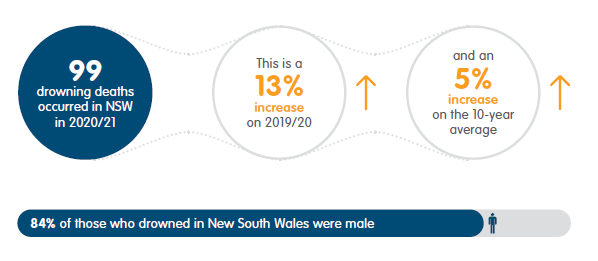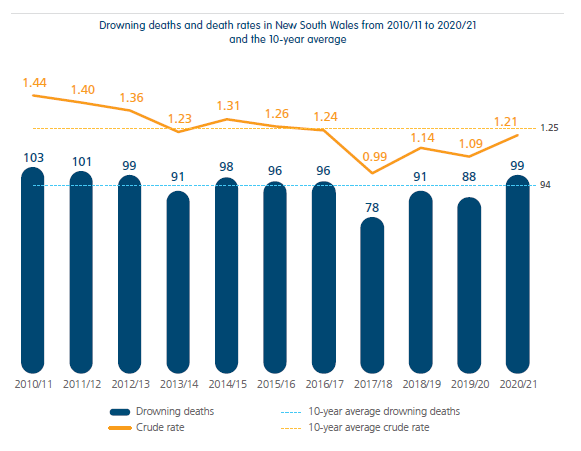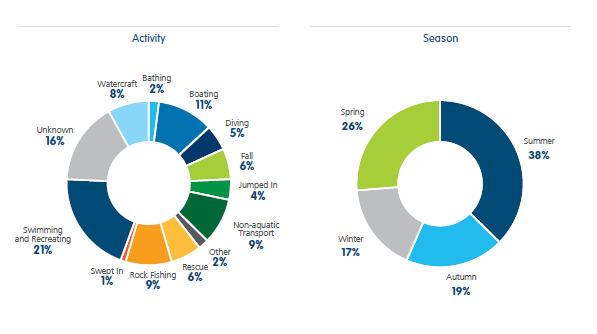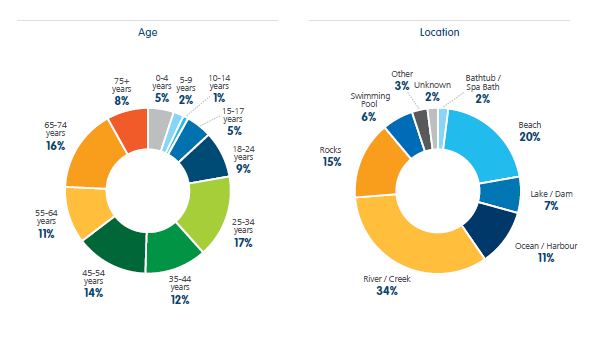
New research by Australia’s leading water safety authorities Royal Life Saving Society – Australia (RLSSA) and Surf Life Saving Australia (SLSA) has revealed a spike in drowning deaths in the past 12 months, with unfamiliar locations, exhaustion, and interruptions to regular swimming during the COVID-19 pandemic considered key factors.
In the Royal Life Saving National Drowning Report 2021 and Surf Life Saving National Coastal Safety Report 2021 released today, there were 294 drowning deaths in the past 12 months across Australia’s coastline, inland waterways and pools, which is 20% higher than last year (245).
Royal Life Saving Society – Australia CEO, Justin Scarr, said he was saddened by the tragic increase in child drowning, and the generational impacts of disruptions to children’s swimming and water safety lessons.
“Royal Life Saving fears that many children will never return to lessons, so won’t meet the fundamental water safety benchmarks, and will miss out on the lifelong benefits of being able to swim. Young children need constant supervision around water, and pool owners should check their pool fence and gate is in good working order ahead of summer,” Mr Scarr said.
“We are concerned about the sharp increase in drowning deaths in inland waterways, particularly rivers. Alcohol and drugs are a key factor in drowning, and lead men to overestimate their swimming ability and under-estimate the risks,” he said.
View the Video
NATIONAL FINDINGS – Royal Life Saving National Drowning Report 2021
294 drowning deaths in Australia in 2020/21; this is a 20% increase on last year (245 deaths) and an 8% increase on the 10-year average (273 deaths)
80% of drowning deaths were males
25 drowning deaths among children aged 0-4 years; this is a 108% increase on last year and a 9% increase on the 10-year average
People aged 25-34 years accounted for 17% of all drowning deaths, the most of any age group
Rivers and creeks were the leading location for drowning (26%), followed by beaches (22%) and ocean/harbourlocations (15%)
75 drowning deaths in rivers and creeks;this is a 53% increase on last year and a 3% increase on the 10-yearaverage
Swimming and recreating was the leading activity prior to drowning (25%), followed by boating (15%) and falls into water (14%)
Key NSW Summary



Download the Full Report
View all of the National Drowning Report Information









